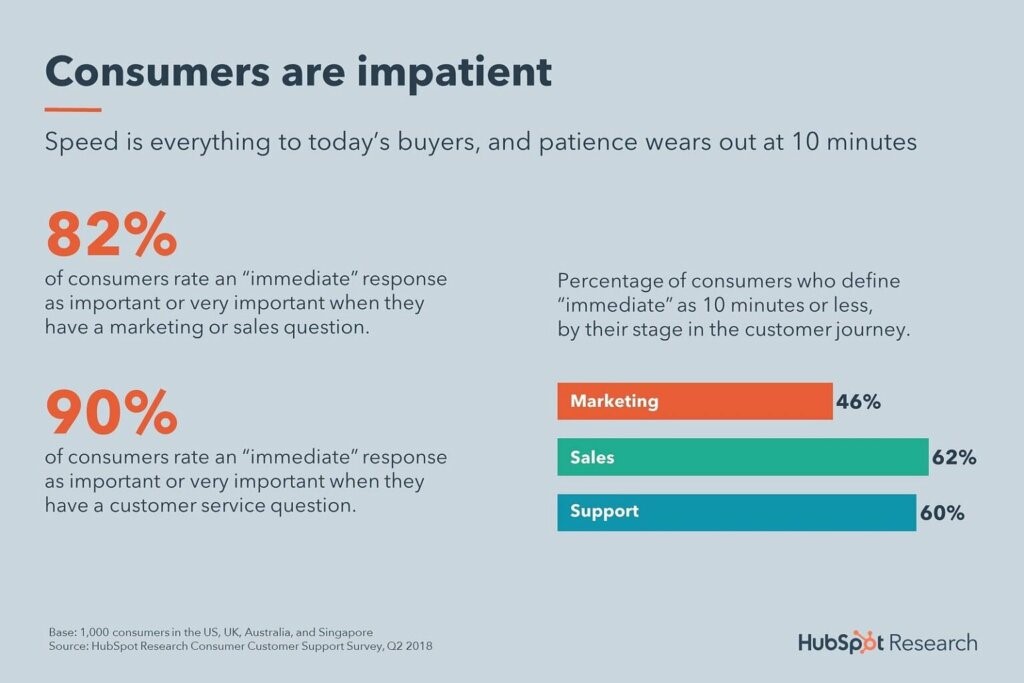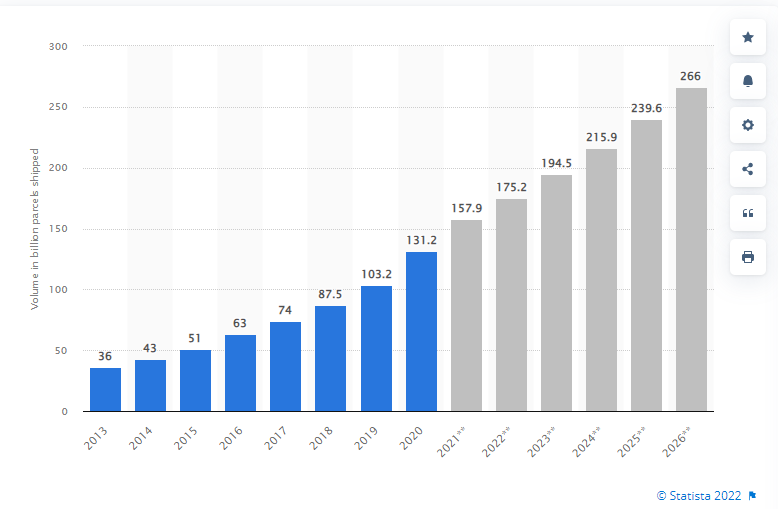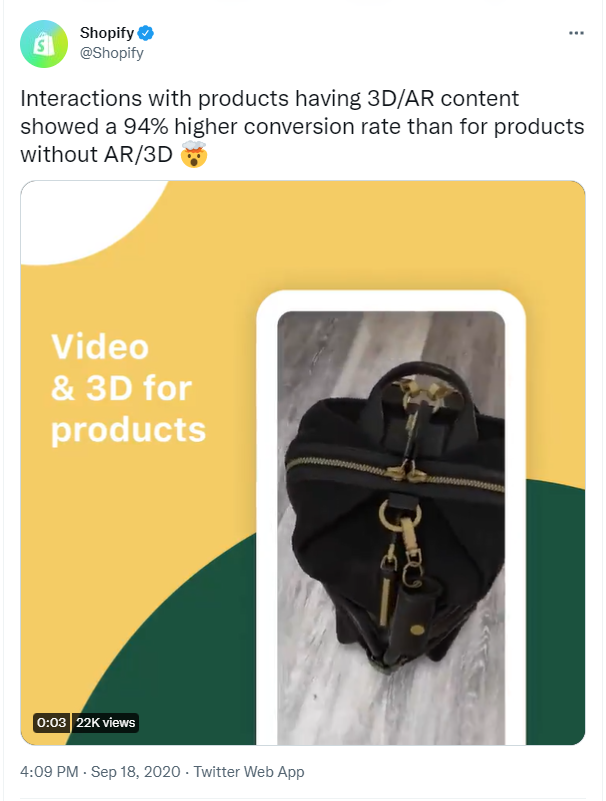While we are still living in the midst of a Global Pandemic, restrictions are lifted in most
places and the world is getting used to the “new normal”. But what does that look like for retail? Will things go back to the way they once were, or are we fully embracing the future and all it has to offer us? Let’s take a look at the six most exciting retail technology trends happening in 2022.
1. Social and omnichannel commerce
Social media has always adapted quickly to emerging trends and that is no different when it comes to social commerce. Facebook, Instagram, YouTube, TikTok and Snapchat have all moved on from just being platforms to socialise with friends and family or watch funny videos on. They are now the leading platforms for advertising and selling products. The difference is that rather than just using them as a marketing tool and re-directing visitors to an online store, users can checkout from the platform they are using at that moment.
This all makes for a frictionless shopping experience, with users able to browse products, check out their favourite brands, watch videos by influencers and get opinions from friends before buying, all within a few clicks — an experience that is bound to win loyalty as it saves so much time, effort and money.
To be able to deliver the around-the-clock service that customers demand these days, you have to have the right retail technology in place and that includes using artificial intelligence (AI).
2. The rise of the chatbots
Artificial intelligence in customer service and retail chatbots is no longer the stuff of sci-fi. These nifty little helpers are increasing in popularity among businesses and customers alike. We are used to conversing with chatbots in apps such as Facebook Messenger, WhatsApp and Slack, but they can be used in various industries, reducing costs and freeing up time, with 64% of customer support agents who utilise chatbots being able to spend most of their time solving complex cases, which can only be good news for brand satisfaction.
Marketing, payment and order processing and customer services are some of the many areas chatbots can be used in, but service has the majority share of the revenue. Insider Intelligence predicts that by 2024 consumer retail spending via chatbots worldwide will reach $142 billion, up from $2.8 billion in 2019.
Recent studies have shown that 40% of internet users would prefer interacting with chatbots to virtual assistants, with major industries, including retail and healthcare, turning to AI technology to deal with many fundamental tasks.
Machine learning systems are now being used in Wall Street trading and in marketing to predict if users will click on certain ads, increasing efficiency for both businesses and consumers. In addition to generating revenue, chatbots can also act as research bots for lead generation and brand awareness. This is all down to the increased advancements in AI perception and cognition technology and companies should note that the more successful chatbots are those that can drive a good conversational AI experience that mimics human agents… but faster.
Customer service in the digital world is all about speed and efficiency and an overwhelming 90% of consumers rate an “immediate response” to be important or very important when they have a question concerning customer service. Chatbots make those long waits on hold a thing of the past and even if they can’t answer your query straight away, you have cut out half the time and trouble getting to the person who can.

3. Natural influencer marketing
Influencer marketing has been on a steady incline for the past few years, but how influencers influence is changing drastically. Long gone are the days when social media posts were highly edited and polished. People want to see authenticity from people and a lifestyle that is attainable to them.
Anyone can become an influencer if they have a smartphone and some knowledge of the latest trends in retail technology, and there are more platforms than ever to do it. The top formats for 2022 are video posts like those found on TikTok, YouTube and Instagram stories, reels and live events. Trusty blog posts are still a winner and podcasts have also entered the ring. But whatever the method, it has to feel natural. People are very savvy about being sold-to these days, so however the influencer promotes a product, be it via text, photos, video or spoken word, it should look and feel authentic and blend seamlessly with the channel. Real-life stories and people making mistakes or having a bad day (but picking themselves up again) resonate much deeper than anything glossy and overedited.
Most importantly, an influencer needs to entertain, educate and intrigue, which is where a great personality and knowledge of retail technology comes in. If they can get that right, they can increase brand awareness and recognition and turn views into conversions and sales.
Related reading: A 2022 guide to digital transformation in retail
4. Social values and ethics
In a similar vein to influencer marketing, consumers buy from brands that reflect their personal values. An Ipsos study of Global Trends in 2021 showed that consumer brand preferences are driven by an alignment of their values and the brands’ purpose.
This trend has grown significantly over the last eight years, with environmental and standing up for social issues as consumers’ main expectations from brands. With younger generations particularly interested in fighting climate change, reducing the use of fossil fuels, and lowering their carbon footprint, businesses have to step up in their use of renewable energy, recycled and recyclable materials and delivery methods.
Consumers are also very keen for brands to be transparent and are turning away from big enterprises with a shady history of paying taxes and treating their employees less than fairly.
5. Same-day or next-day delivery
Indeed, consumers would prefer to buy locally for all the social and ethical reasons mentioned above, but there is one stickler: delivery times.
Amazon has been the frontrunner with same and next-day delivery and of course, it can afford to produce and deliver at such high demand, whereas smaller businesses are struggling to keep up. Joining forces with postal services will be in the best interest of smaller businesses, as 72% of Amazon Prime customers cite unlimited free and fast delivery as the primary reason they pay for the service.
During the COVID-19 pandemic in 2020, the total volume of parcels shipped worldwide hit 131 billion. In less than six years, this volume is expected to more than double and reach 266 billion parcels shipped in 2026. So it is vital for businesses to embrace the latest retail technology to keep up with demand.

6. Augmented reality (AR) shopping
Augmented reality is still a pretty new player in the retail technology industry, but one that is likely to change the face of shopping forever.
You may have experienced AR through try-on technology such as makeup and clothing or when deciding on which new car you might want to buy. AR is an immersive experience that can help you decide which lipstick shade will look good on you, what that sofa could look like in your living room and what your shiny new car will look like parked in your driveway. AR has a wow factor and it’s that which has led to amazing marketing results such as 20% increases in interaction rates, 33% increases in click-through rates to purchase and the ability to hold a user’s attention for 85 seconds — figures that dwarf print, online and TV marketing.
While it seems like only the big players such as IKEA, Netflix, Pepsi and Nike have really embraced this new trend of retail technology, that’s all set to change. Apple and Google have invested heavily in AR to make it more efficient and accessible to the billions of smartphone users. Tim Cook, Chief Executive of Apple, said in 2018, “AR will be as important as eating three meals a day”.
With Shopify launching its AR toolkit, many more businesses, big and small, can bring their products to life. They can increase buyer confidence by showing detail, scale and size and engaging shoppers in ways they have never experienced before. And it seems to be working! Shopify reported that interactions with products with 3D/AR content showed a 94% higher conversion rate than products without AR/3D.

Excited about the new trends in retail technology? Get in touch with the Futr team to discuss how to drive digital transformation in your organisation with our chatbots and live chat solution.
You can sign up for a four-week trial of our platform or schedule a FREE demo at your convenience. You can also follow the Futr blog to get more insights on how tech and AI chatbots can transform your customer experience.

